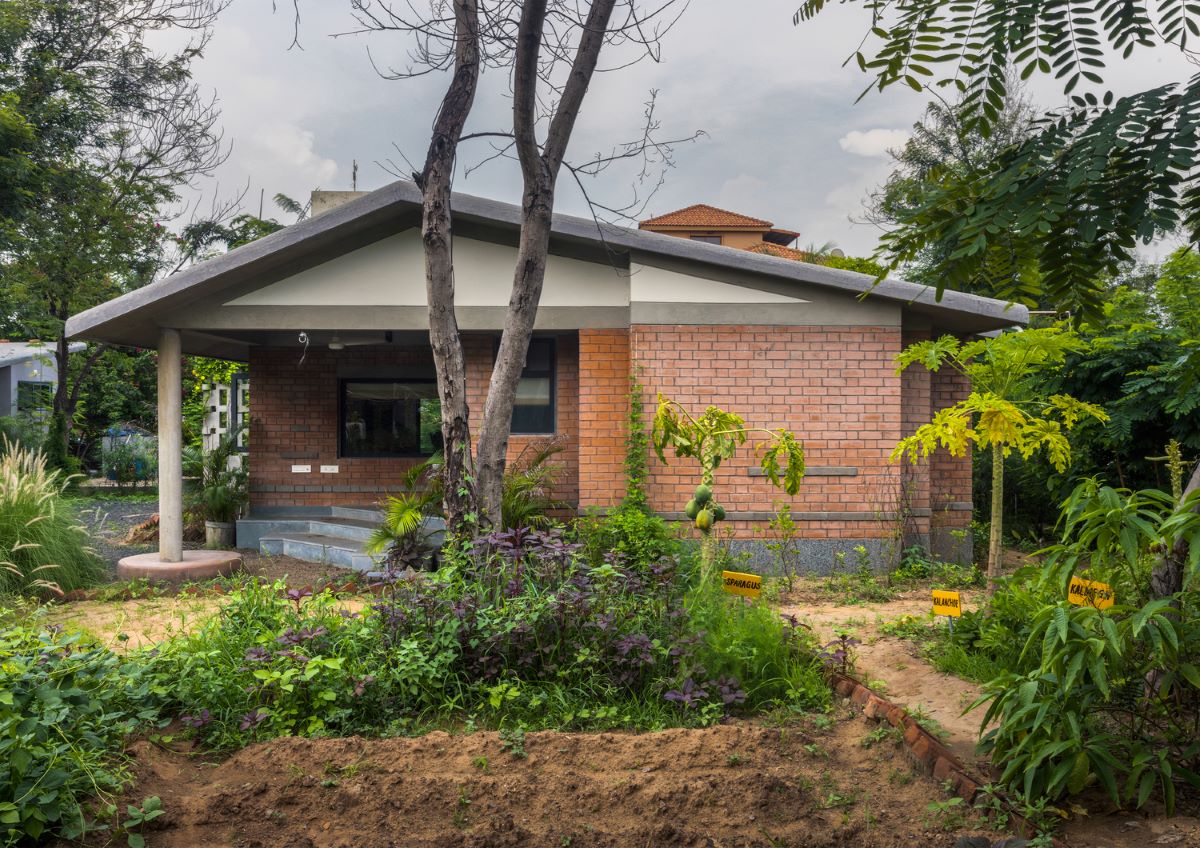
There are many ways to live – each reflected in differing housing typologies. Nostalgia reminds us of simpler times when homes facilitated interaction on a larger scale – shouting across balconies to gather players for a game of cricket, sharing of recipes among culinary enthusiasts, waving to neighbours across roof-tops until eventually everyone in the vicinity were familiars.
A way of living where one grew up feeling connected.
As neighbourhoods grew more dense, housing started looking inwards. Self-sufficient islands with their backs to the neighbourhood and the city; shut out the dust, pollution and noise. But they also closed ourselves to all the possibilities of beautiful connections outside. Cut to 2019 – shut in during a pandemic, the world collectively ached for human connection. Perhaps extroverted houses can take us back to a world of serendipitous connections.
When an upcoming young developer approached us to design a multi-family dwelling in a neighbourhood in Central Delhi, we knew that we wanted to step away from designing ‘islands’. We envisioned an extroverted building that would interact with its context and facilitate connection without compromising on privacy.
By revisiting simple, honest architectural principles we endeavoured to create a higher quality of life for these multi dwelling units.


We began by studying our context – a site open on two sides. The front opens to a primary approach road, looking over a single, full-grown tree and the only opportunity for views, while the back provides filtered views of a small community park. The building is designed to accommodate three families on four floors: two of them are single-level apartments and one is a duplex.
The massing is derived from our careful study of the climatic conditions and user comfort. The overall mass is divided into two zones. The lesser used service areas, like toilets and staircase, are kept towards the southern side, affected by the hot sun. All the bedrooms and living spaces are aligned with the open facades, to provide maximum daylight, ventilation and connection with the surroundings. This was instrumental in reducing the need for artificial lighting during daytime, making the household energy-efficient.


Once we had a vertical mass with deep balconies jutting out, we added fins at the edge to create ‘portals’. By placing the fins at irregular intervals, we are able to play with the scale and the aperture size of the multiple portals.
Shared glimpses across the portals create serendipitous moments of connection under the watchful eye of the large tree. Her leaves scatter shadows on the building; crafting a daily narrative of time and timelessness.


By angling the fins at varying degrees, the fins seem to dance with the breeze, making the facade dynamic. To heighten their tactile appeal, the fins are clad in Gwalior Mint, with alternating courses of smooth and coarse textures. The angled fins with their dual texture interact with light in delightful ways, creating myriad patterns of shadows and light. Walking along the building, the fins seem to spell out a musical score that is revealed to wandering, curious eyes. Those who pause to follow the fins all over the building will discover the full symphony of the poetry set in stone.



On the first floor, a narrow portal is sandwiched between two wider portals – akin to a sharp pause between two longer notes. The more evenly spaced portals on the second floor are reminiscent of the mature sound of balanced notes. The crescendo comes alive with the massive portal straddling the top two floors.
As the leaves of the tree rustle with the wind, it has a musical companion in the Portal House.

The Portal House seems a fitting friend to the massive tree, which has seen the neighbourhood in its various iterations. Perhaps she approves of people peeking out from these stone fins and portals, glancing across at people, neighbours, would-be-friends all just a connection away.
Diagrams





Project Facts
Location: Delhi, India
Project Year: 2022
Area : 12,000 sqft
Architects: UnBox. Design | Architecture + Interiors
Team : Aman Issar, Ashley Grover, Rajat Duggal
Photography: Avesh Gaur Photography








